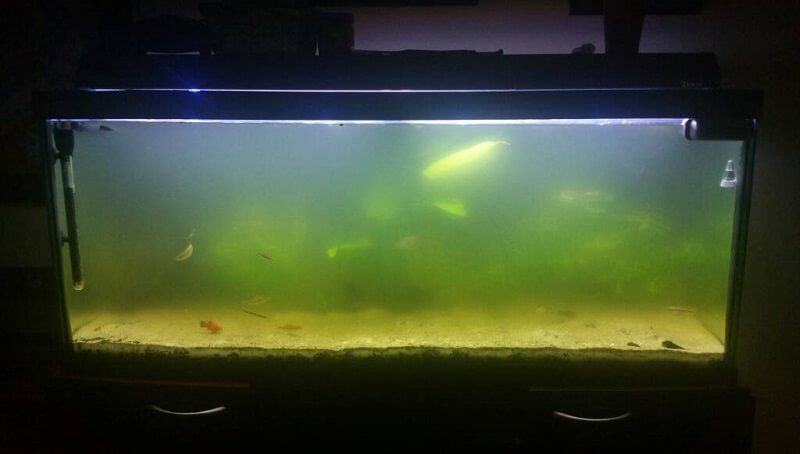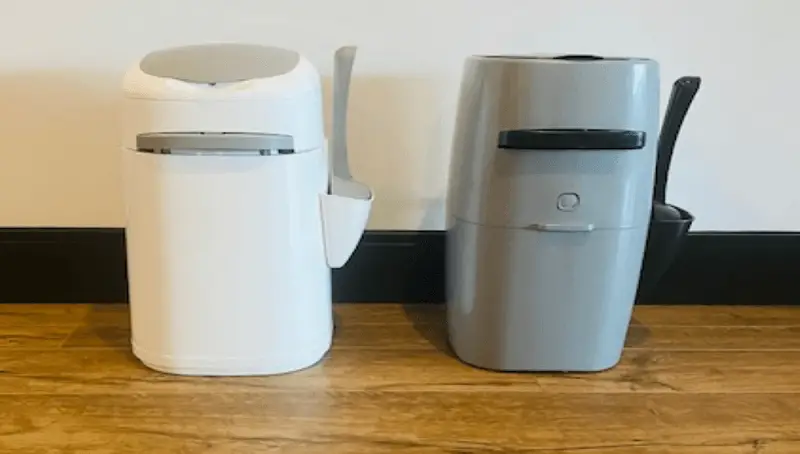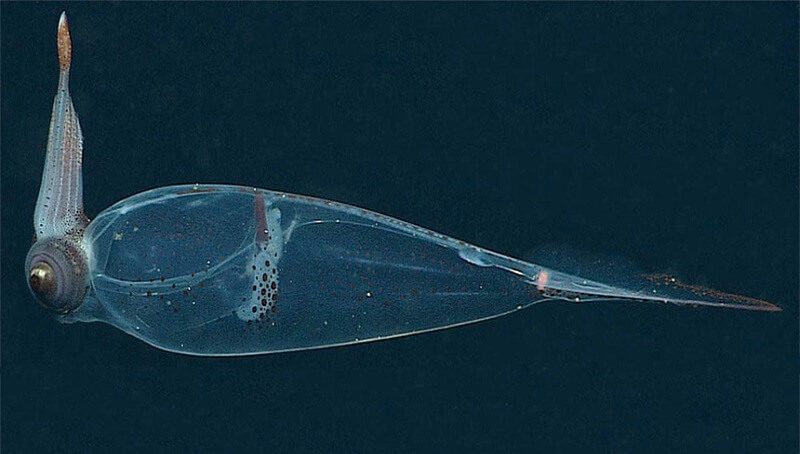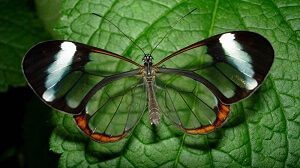
Why is The Water in The Aquarium Green?
July 7, 2022
LitterLocker vs. Litter Genie – Which one is better?
July 7, 2022
Nature never ceases to amaze us with its diversity of perfect life forms in millions of years of adaptive evolution. The emergence of transparent creatures aimed at their survival in hostile environments full of predators. Most animals with an ancient body use this adaptation as a passive camouflage, their body becoming somehow invisible, mistaking itself for the environment as a piece of living glass making predators look at the shape of prey without distinguishing the alleged victim.
- Transparent jellyfish
Most jellyfish species that inhabit the Earth’s seas and oceans do not have a specific color, being almost invisible. Clustered by researchers in the Cnidaria phylum, transparent invertebrates use this adaptive property as an effective means of hiding from predators at night, when even the sharpest eye of fish does not distinguish them in the waves of the sea. This apparent transparency helps jellyfish even when they want to feed, often tricking the prey.
Jellyfish are extremely primitive animals and have no specialized systems – digestive, osmoregulatory, nervous, respiratory, or circulatory. Some species of jellyfish are edible, being widely used in local cuisine in Southeast Asia. The species of transparent jellyfish Turritopsis nutricula has attracted the attention of all scientists in the world because it is a practically immortal living creature. When such a jellyfish ages, the cells in its body enter a unique process of rejuvenation. The animal goes back from the adult stage to the baby stage.
- Salpa Maggiore
Under the name of salpas, zoologists grouped a number of primitive animals from the Chordata class. These animals live equally in equatorial, temperate, and cold waters of the planetary ocean. The highest concentration of salpas is found in the waters around Antarctica, where populations tend to slowly replace the populations of krill (a species of small crustaceans, Euphausia Superba), which have been declining in recent years. Salpa moves by continuously contracting and pumping water through its transparent body, which is between 1 and 10 centimeters long.
Although they look similar to jellyfish, due to their simple body and swimming, they are more evolved than jellyfish, with researchers claiming that these marine creatures exhibit small nervous formations that resemble the first forms of the central nervous system. Salpas feed on phytoplankton and use the transparent appearance of their body to create the dizzying image of several bodies that are confused with each other.
- Transparent larvae of Hawaiian shrimp
In the waters that bathe the archipelago of Hawaii lives a species of shrimp whose larvae have also chosen the “shelter” provided by a transparent silhouette. At the end of the breeding season, the female Hawaiian shrimp lays between 50.000 and 1 million freshly fertilized eggs. After a period of only 24 hours, the eggs hatch shrimp larvae, called the nauplius in scientific language. The small transparent larvae feed on the reserves of nutrients stored in their own body until they pass into the upper zoea phase.
The small larva transformed into a zoea retains its transparent physique because it is still vulnerable to predators. The transparent larvae of the Hawaiian shrimp are almost confused in appearance with some jellyfish species. Consequently, in order to increase the chances of survival, shrimp larvae seek the company of transparent jellyfish groups of similar size to their own, in order to gain additional camouflage.
- Transparent amphipod
Amphipods of the family Phronimidae sedentary were recently discovered by a submarine expedition that was investigating the abyss in the northern part of the Atlantic Ocean. To increase their chances of survival, this invertebrate shows transparency, including in the internal organs. Although at first glance it appears to be a species of shrimp, Phronima is very different from crustaceans that feed on phytoplankton.
You might also like my articles on transparent fish, jellyfish, and minnows.
It is a small but ferocious carnivorous animal that does not exceed the length of 2,5 centimeters. It lurks his prey in complete darkness, hiding in the abysmal crevasses. Its favorite prey is the little plankton creatures that it hunts without any help.
- Icefish or noodlefish
Sometimes referred to as crocodile ice-fish (perhaps because of its mouth full of teeth) this creature is not, despite its name, a crocodile or ice. The group of fish of the Channichthyidae family, as the ichthyologists have called them, includes several species of fish with transparent and semi-transparent bodies. Their adaptation to the total lack of light in the ocean abyss consists not only in the lack of colored pigments in the tissues but also in their blood, these fish being among the few vertebrate species that have transparent blood. In fact, ice fish are the only vertebrate animals without hemoglobin.
Their metabolism relies only on oxygen dissolved in their own blood, oxygen that is absorbed from the water through their transparent skin. The metabolic rate increases as fish enter cold waters, which are naturally richer in oxygen than warm waters. In five species of icefish, the myoglobin gene in the muscles has completely disappeared, leading to the appearance of transparent internal organs. They are powerful predators, feeding on krill, copepods, and other fish.
- Zebrafish created by researchers
The Zebrafish is one of the most beloved fish by aquarium enthusiasts. American researchers at children’s Hospital in Boston have been able to create, through hundreds of genetic combinations, aquarium zebrafish that have the property of being transparent.
Richard Klemke, the head of the project, told the press that the process of obtaining transparent zebra fish was not a scientific experiment done out of curiosity or amusement of researchers. The reason was a humanitarian one. The researchers needed transparent fish, because only then could they track the stages of the appearance and development of cancerous tumors on different organs. Hoping to find more effective cancer treatments, researchers can now see for the first time how a cancerous tumor appears and develops inside a living organism.
- Glass squid
The Teuthowenia Pellucida or glass squid is a fascinating living creature, which few researchers are lucky to notice in its natural environment. It is a cephalopod (related to the cuttlefish and octopuses) that populates the abysmal floor of the planetary ocean. Its young live in surface waters, but once the glass squids mature, they migrate to deep waters, where they live in absolute darkness until the end of days, perfectly adapted to the enormous pressure in those places. As certified by the first divers who named it and brought it to the surface for research, the glass squid is among the most transparent living creatures in the oceans.
If its relatives from the Cranchiidae family can reach lengths of 3 meters, the little Teuthowenia pellucida is only a few centimeters at maturity. The only internal organ visible in its transparent body is the digestive gland, an organ equivalent to the liver of vertebrates. Glass squids have bioluminescent organs located near the eyes and possess the ability to turn into a transparent ball, thus moving more easily in water currents. Like most abyssal creatures, glass squids are feared predators of small fish with which they share the frozen and cold depths of the oceans.
- Greta oto – Glasswing butterfly
 Deep in the tropical jungles of Central America, somewhere in the compact forest between Mexico and Panama, lives a butterfly with an extraordinary appearance. Scientifically named it Greta oto, in honor of the elegant Actrite Greta Garbo, by the first entomologists to describe it, the strange butterfly hides many surprises, some even deadly. The butterfly has the upper parts of the wings colored in vivid shades of black, green, red, and yellow. The lower parts of the wings are completely transparent, similar to the wings of flies.
Deep in the tropical jungles of Central America, somewhere in the compact forest between Mexico and Panama, lives a butterfly with an extraordinary appearance. Scientifically named it Greta oto, in honor of the elegant Actrite Greta Garbo, by the first entomologists to describe it, the strange butterfly hides many surprises, some even deadly. The butterfly has the upper parts of the wings colored in vivid shades of black, green, red, and yellow. The lower parts of the wings are completely transparent, similar to the wings of flies.
The caterpillar of this butterfly is very venomous because it feeds on plants rich in alkaloid toxins. The caterpillars keep their toxins in their tissues until they reach adulthood and turn into glass-winged butterflies. When they reach maturity, glass-winged butterflies undertake long migrations during the mating season. The poisons stored in the body since they were caterpillars turn them into some of the most dangerous insects and experts recommend not to capture such a butterfly with bare hands.
- Barreleye fish
Macropinna microstoma is a fish that reaches only 15 centimeters in length, which does not prevent it from being a formidable predator in the abyss world. It lives at depths of over 600 meters, in areas where visibility is almost zero. American researchers have found that the fish spends most of their time sitting still. The two formations that, at first glance, appear to be its eyes, are actually the olfactory organs, through which it “feels” the peculiarities of its environment.
The eyes are located at the top of the head, having the shape and role of periscopes. The same unusual eyes have the property of rotating around their own axes. The position of its eyes helps it distinguish the prey underneath, a special quality of fish hunting in the dark depths of the Pacific Ocean.
- Glass frog
The strangest representative of the elders is the transparent frog or the glass frog, as the native Amerindians of Amazonia call it. Under the name transparent frog, there are actually several species that belong to the Centrolenidae family. All frogs in the genera Centrolene, Cochranella, Hyalinobatrachium and Nymphargus have the same translucent abdomen through which the heart, liver, digestive tract, spine, and the rest of the skeleton are seen in detail.
For camouflage in the jungle, the back and head of the glass frogs are colored in a vivid shade of green, resembling at first glance the frogs of the genus Eleutherodactylus and the tree frogs of the family Hylidae. Researchers have studied the reasons why glass frogs have the abdomen and anterior parts of transparent limbs for many years without finding a convincing and definitive explanation. Most herpetologists, however, believe that these frogs have a transparent abdomen as an adaptation to variations in humidity in the suffocating atmosphere of equatorial forests.
Final Words
The natural world is full of such living examples. Transparency is the perfect camouflage and is relatively common in aquatic species where tissues have a refractive index similar to that of the water in which animals live. As you can see in this article, aquatic species are not the only ones with transparent tissue.
These wonderfully strange life forms show us some of the extreme ways nature distorts light in the game of “eat or be eaten.”
